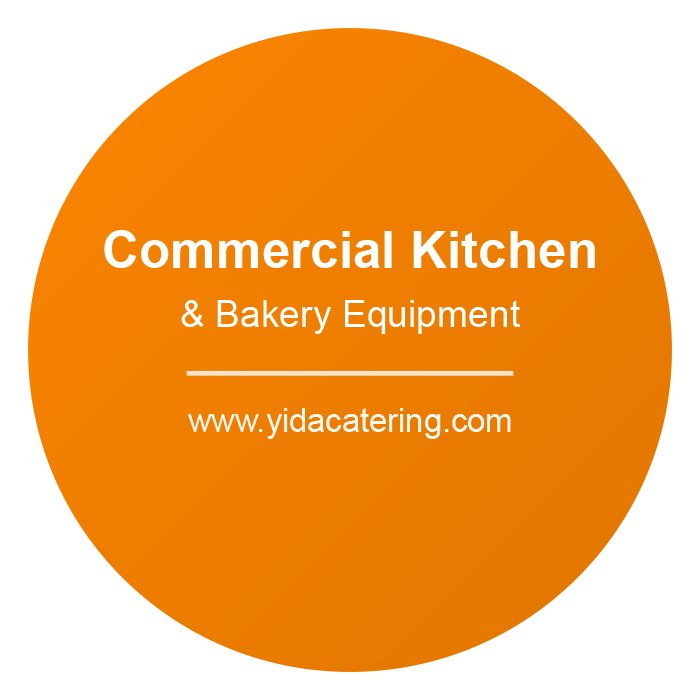A pizza oven is the heart of any restaurant or cafe specializing in pizza. Whether you’re opening a pizzeria, adding pizza to your menu, or upgrading your current setup, choosing the right pizza oven can make or break your business. The perfect pizza oven ensures consistent quality, operational efficiency, and customer satisfaction. In this guide, we’ll walk you through everything you need to know to select the ideal pizza oven for your establishment.
1. Understand Your Business Needs
Before diving into the technical details, it’s essential to evaluate your business requirements. Ask yourself the following questions:
- What is your expected pizza output?
Understanding your daily pizza production will help you determine the oven size and type. - What types of pizza will you serve?
Different styles like Neapolitan, New York, or deep-dish require specific cooking temperatures and techniques. - How much space do you have?
Measure your kitchen space to ensure the oven fits comfortably without disrupting workflow. - What is your budget?
Pizza ovens vary widely in price, so establish a budget that balances quality with affordability.
2. Types of Pizza Ovens
Pizza ovens come in various types, each with unique advantages and limitations. Here’s a breakdown of the most popular options:
a. Brick Ovens
Brick ovens are the traditional choice for authentic, wood-fired pizzas. They use high, consistent heat to produce a crispy crust and smoky flavor.
Pros:
- Perfect for Neapolitan and artisan pizzas.
- Retains heat for long periods.
- Adds a unique flavor profile.
Cons:
- Expensive to install.
- Requires skilled operation.
- Takes time to heat up.
Best For: High-end pizzerias and restaurants focusing on traditional pizzas.
b. Deck Ovens
Deck ovens use gas or electricity and feature stone decks that mimic the effects of a brick oven. They are versatile and common in many pizza restaurants.
Pros:
- Consistent cooking results.
- Easy to operate.
- Suitable for multiple pizza styles.
Cons:
- Takes up significant space.
- Longer preheating time.
Best For: Medium to high-volume restaurants offering diverse pizza options.
c. Conveyor Ovens
Conveyor ovens are highly efficient and use a conveyor belt system to cook pizzas evenly. They are ideal for fast-paced environments.
Pros:
- High output for busy restaurants.
- No need for skilled operators.
- Consistent and even cooking.
Cons:
- Limited to specific pizza styles.
- May lack the artisanal touch.
Best For: Fast-food chains and high-volume establishments.
d. Countertop Ovens
Compact and affordable, countertop ovens are perfect for small cafes or food trucks with limited space.
Pros:
- Space-saving design.
- Affordable and portable.
- Quick preheating.
Cons:
- Limited capacity.
- Not suitable for large-scale production.
Best For: Small businesses with low pizza demand.
e. Combi Ovens
Combi ovens combine convection and steam cooking, offering flexibility for various menu items, including pizzas.
Pros:
- Versatile for multiple cuisines.
- Energy-efficient.
- Compact design.
Cons:
- Higher learning curve.
- May not achieve traditional pizza textures.
Best For: Restaurants with diverse menus.
3. Key Features to Consider
When selecting a pizza oven, pay attention to the following features:
a. Temperature Range
Different pizza styles require specific temperatures. For example, Neapolitan pizzas need temperatures around 900°F, while New York-style pizzas cook well at 500-600°F. Choose an oven that meets your temperature requirements.
b. Cooking Time
The cooking time is critical for customer satisfaction and operational efficiency. High-temperature ovens like brick or deck ovens can cook pizzas in minutes, while conveyor ovens are best for continuous production.
c. Energy Source
Pizza ovens can be powered by wood, gas, or electricity. Consider the pros and cons of each:
- Wood: Adds flavor but requires more maintenance.
- Gas: Offers consistent heat and is cost-effective.
- Electric: Easy to install and operate but may have higher energy costs.
d. Size and Capacity
Ensure the oven’s size aligns with your kitchen space and production needs. Larger ovens can cook multiple pizzas simultaneously, but they require more space and energy.
e. Ventilation Requirements
Some ovens, like wood-fired or gas ovens, need proper ventilation systems to comply with safety regulations. Factor in the cost and space for ventilation when making your decision.
4. Budget Considerations
Pizza ovens range from a few hundred dollars for basic countertop models to tens of thousands for high-end brick ovens. Here’s how to budget effectively:
- Initial Cost: Include the oven price, installation, and any necessary kitchen modifications.
- Operating Costs: Factor in energy consumption, maintenance, and labor.
- Return on Investment (ROI): A high-quality oven may have a higher upfront cost but can save money in the long run through efficiency and durability.
5. Maintenance and Durability
A reliable pizza oven should last for years with proper care. Look for models with durable materials and easy-to-clean designs. Regular maintenance, such as cleaning burners or replacing conveyor belts, will keep your oven running smoothly.
6. Advanced Features to Look For
Modern pizza ovens come with advanced features that enhance usability and efficiency:
- Digital Controls: Simplify temperature and time adjustments.
- Programmable Settings: Save presets for different pizza styles.
- Energy Efficiency: Look for Energy Star-certified models to reduce operating costs.
- Self-Cleaning Functions: Minimize downtime and labor costs.
7. Final Tips for Choosing the Right Pizza Oven
- Test Before Buying: If possible, test the oven to see how it performs with your recipes.
- Consult Experts: Speak with manufacturers or industry experts to get personalized recommendations.
- Read Reviews: Check online reviews and testimonials to learn from other restaurateurs’ experiences.
- Plan for Growth: Choose an oven that can handle increased demand as your business grows.
Conclusion
Selecting the perfect pizza oven for your restaurant or cafe is a significant investment that requires careful consideration. By understanding your business needs, exploring different oven types, and evaluating key features, you can make an informed decision that enhances your kitchen’s efficiency and delights your customers. Remember, the right pizza oven isn’t just a piece of equipment—it’s the cornerstone of your culinary success.

